Vegetarian Omega-3 Made Simple: Powerful Foods & Benefits
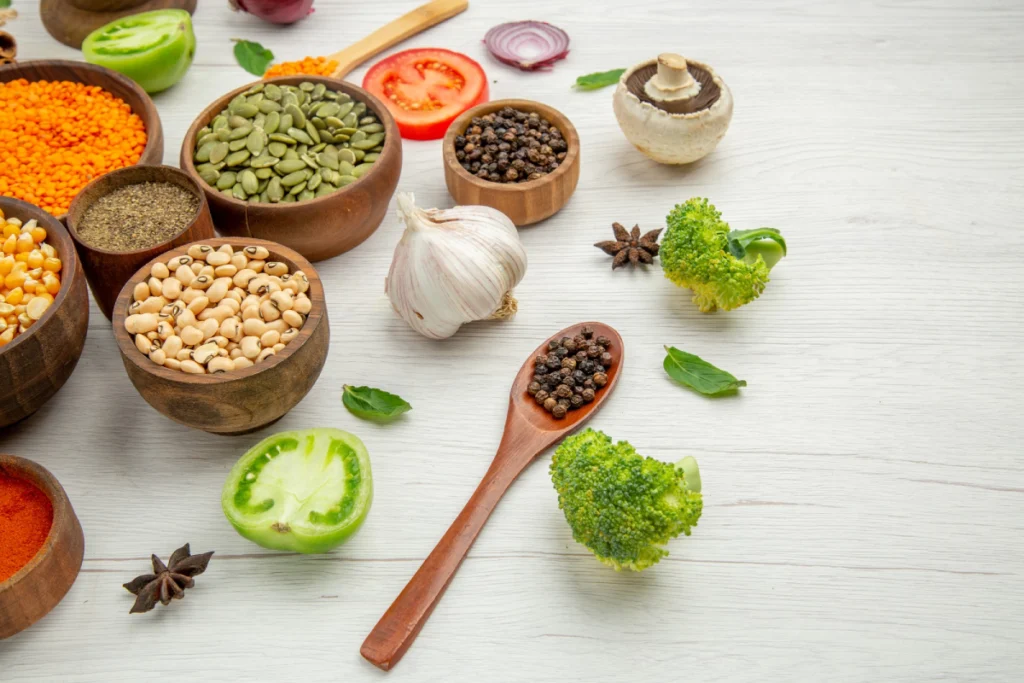
In a world increasingly aware of the connection between diet and health, omega-3 fatty acids have emerged as one of the most researched nutrients. They’re linked to numerous health benefits, including brain health, metabolic balance, inflammation control, and overall well-being. Yet, for many vegetarians and plant-based eaters, a pressing question remains:
Can I get enough omega-3s without consuming fish or fish oil?
The short answer is yes, absolutely! With the right plant-based foods and a bit of knowledge about how omega-3s function in our bodies, you can definitely meet your omega-3 needs. This comprehensive guide is designed to help you navigate the world of omega-3s, explore the science behind them, discover suitable plant sources, and learn practical tips to ensure you’re meeting your nutritional needs with confidence.
Table of Contents
Why Omega-3 Matters More Than Ever?
The dietary landscape has shifted dramatically in recent decades. One striking change is the balance between Omega-6 and Omega-3 fatty acids in our diets. Ideally, these should be consumed in a ratio of about 1:1. Unfortunately, processed foods and refined oils have skewed this balance significantly, often pushing it to an alarming 15:1 or even 20:1.
Why does this matter? An imbalance in Omega-6 and Omega-3 can lead to increased inflammation, impact metabolic health, and worsen conditions such as anxiety and hormonal imbalances.
Recent research published in the Journal of Nutrition and Metabolic Health highlights the importance of improving Omega-3 intake, especially ALA (alpha-linolenic acid), to help reduce inflammation and promote better metabolic markers, even for those following a vegetarian diet.
What are omega-3 fatty acids? A simple primer
At their core, Omega-3 fatty acids are polyunsaturated fats that our bodies can’t produce independently; we must obtain them through our diets. The three main types of Omega-3s we should be aware of are:
▪️ALA (Alpha-Linolenic Acid): A short-chain Omega-3 found in plant sources like flaxseeds, chia seeds, walnuts, and hemp.
▪️EPA (Eicosapentaenoic Acid): A long-chain Omega-3 known for its anti-inflammatory properties.
▪️DHA (Docosahexaenoic Acid): Another long-chain Omega-3 concentrated in the brain, eyes, and reproductive tissues.
Our bodies have the ability to convert ALA to EPA and DHA, but the conversion isn’t very efficient. For most adults, the conversion rate from ALA to EPA is modest, and to DHA is often less than 5%. Factors such as age, sex, genetics, and dietary context can all play a role in how well this conversion occurs.
Understanding this helps clarify why some vegetarians rely solely on plant-based ALA, while others opt for algal DHA supplements to ensure they’re getting enough of the longer-chain Omega-3s.
A 2024 review reiterated that conversion rates are generally low and influenced by factors such as sex (women often convert a bit more efficiently than men) and competing dietary omega-6 fats. That means dietary strategy, not just single foods, shapes your omega-3 status.
Why is omega-3 crucial for vegetarians? Health areas that rely on it.
As a vegetarian, your diet is packed with beneficial nutrients. However, it also requires attention to certain areas, such as Omega-3s. Let’s delve into why Omega-3 is crucial for your health:
▪️Brain and cognitive health: DHA isn’t just a nutrient; it’s a major structural fatty acid in the brain. Adequate DHA levels are associated with cognitive function throughout life. For pregnant and breastfeeding people, DHA is critical for fetal brain and eye development. Updated guidance recommends that women of childbearing age ensure they get sufficient long-chain omega-3s to reduce the risk of preterm births and support better outcomes for newborns.
▪️Heart health: Both ALA and longer-chain Omega-3s help modulate lipids and reduce inflammation. A wealth of population and clinical data suggests that higher Omega-3 intake is linked to improved heart health. Diets rich in plant sources of ALA, including walnuts, have shown positive effects on lipid profiles and cardiovascular markers.
▪️Inflammation and mood: Omega-3s, particularly EPA and DHA, have proven anti-inflammatory properties and have been studied for their effects on mood disorders. While much of the research focuses on Omega-3s from marine sources or algal DHA, well-planned plant-based strategies can also support a healthy inflammatory balance.
A 2024 Frontiers review emphasised implementing sustainable strategies to deliver LC-PUFAs to women of childbearing age, a sign that public health attention has shifted toward ensuring vegetarians/vegans have practical, evidence-based options.
Breaking the myth: “Vegetarians can’t get enough omega-3”
It’s time to debunk a common myth: vegetarians absolutely can meet their Omega-3 needs!
The key is in the strategy.
▪️Plant ALA sources like flaxseeds, chia seeds, hemp seeds, walnuts, and canola oil provide ample ALA that has its own unique health benefits. Research suggests that ALA consumption is associated with various positive health outcomes.
▪️Conversion trickiness: However, since the conversion of ALA to DHA is inefficient, many vegetarians consider taking algal DHA supplements to boost their DHA levels directly. Clinical trials and systematic reviews have demonstrated that algal DHA effectively raises DHA concentrations in the body, which can be especially important for those who might need higher levels, such as pregnant women or those concerned about cognitive health.
Systematic reviews of algal supplementation demonstrate consistent increases in circulating DHA concentrations in vegetarian populations, so the barrier is not “can’t” but “do you need to?” and “how aggressively do you want to top up long-chain omega-3s?”
When contemplating Omega-3s, it’s important to remember that dietary strategy matters just as much as individual food choices.
Top vegetarian omega-3 sources : foods, doses, how to use them
Below are practical vegetarians’ favourites, with quick notes on contents and how to include them.
Flaxseed (whole or ground; flaxseed oil)
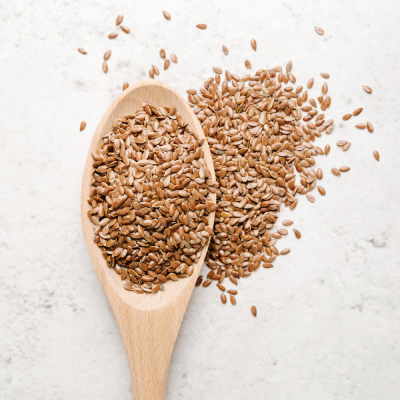
▪️Why it matters: One of the richest ALA sources. Ground flax is far more bioavailable than whole. Flaxseed oil delivers concentrated ALA but lacks fibre and lignans present in the whole seed.
▪️How to use: Grind whole flax and add to smoothies, porridge, or roti dough; use flax oil for cold dressings.
▪️Research note: Flax consistently shows high ALA content and beneficial effects on lipid markers when used as part of a heart-healthy diet.
Chia seeds
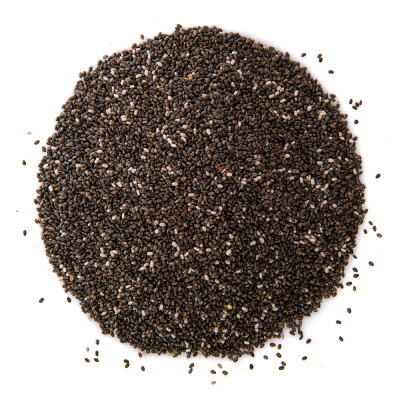
▪️Why it matters: High in ALA and easy to incorporate into puddings, yoghurts, and baked goods, Chia’s mucilage also improves satiety and digestion.
▪️Practical tip: Soak chia to improve digestibility and mix into breakfasts or smoothies. Recent reviews reaffirm chia’s role as a convenient plant source of ALA.
Walnuts
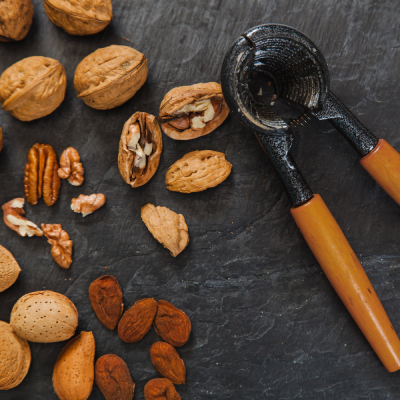
▪️Why it matters: The only commonly eaten tree nut with substantial ALA. Regular walnut consumption is linked to better lipid profiles and cardiovascular markers in ageing and adult populations.
▪️How to use: Snack on a small handful daily, add to salads, or make walnut pesto.
Hemp seeds & hemp oil
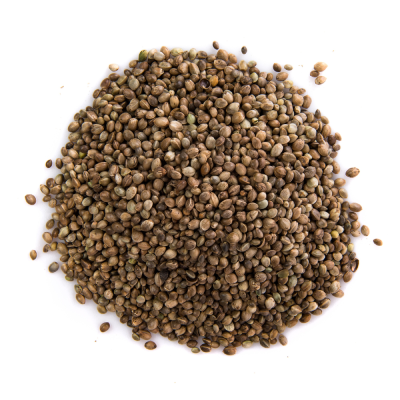
▪️Why it matters: Good ALA content and an advantageous omega-6:omega-3 ratio also supply protein and minerals.
▪️How to use: Sprinkle on salads, blend in smoothies, or use raw in baking.
Soy products (edamame, tofu) & leafy greens
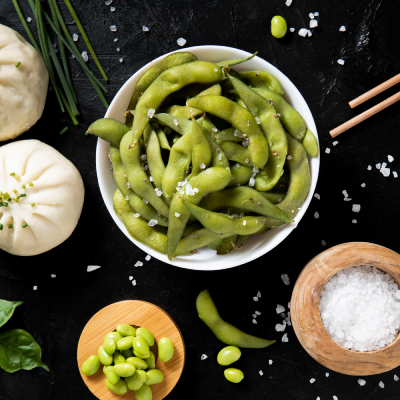
▪️Why it matters: Contain modest ALA amounts and contribute to total daily ALA intake. While not as concentrated as seeds/nuts, they’re practical staples in vegetarian diets.
▪️How to use: Make edamame snacks, tofu stir-fries, and large leafy green salads.
Algae/seaweed & algal oil (the direct DHA route)
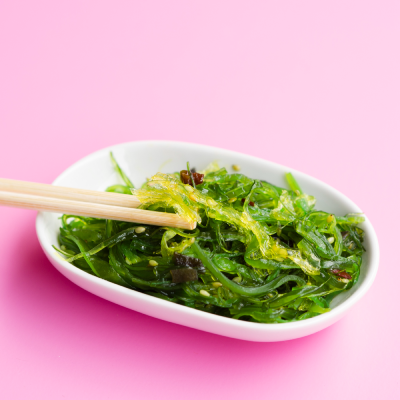
▪️Why it matters: Algae synthesises DHA, algal oil supplements provide preformed DHA suitable for vegetarians and vegans. Trials show algal DHA reliably raises circulating DHA and omega-3 indices. For pregnancy and people requiring higher DHA, algal oils are the vegetarian alternative to fish oil.
Algal supplementation trials repeatedly show direct increases in DHA concentrations across vegetarian and vegan study groups, making algal oil the go-to for guaranteed DHA increases when dietary ALA is insufficient.
How much omega-3 do you actually need? Practical targets for vegetarians
Official recommended intakes vary by body system and country, but practical targets help with planning:
▪️ALA: General adult recommendations range from about 1.1-1.6 g/day (women/men, respectively) in many public health guidelines, a modest but important baseline. The NIH notes ALA can be converted to EPA and DHA, but does so inefficiently.
▪️EPA/DHA (combined): Many expert groups recommend 250-500 mg/day of combined EPA+DHA for general cardiovascular and cognitive support in adults. For pregnant/lactating people, recommendations often target at least 200-300 mg/day DHA specifically to support fetal brain/eye development and reduce preterm birth risk; recent guidance in 2024 reinforced the importance of LC-PUFA intake for women of childbearing age.
Practical vegetarian plan: Aim for daily ALA intake from seeds/nuts (e.g., 1-2 tablespoons ground flax or 1-2 tbsp chia + a small handful of walnuts), and consider algal DHA (200-300 mg/day) if pregnant, planning pregnancy, older, or concerned about cognition or inflammation. Blood tests (omega-3 index, RBC DHA) can personalise this decision.
How to build a veg omega-3-rich plate
Make omega-3s habitual by pairing foods and simple swaps:
Daily building blocks
- Breakfast: Chia-banana pancakes (ground chia in batter)
- Snack: Handful of walnuts or hemp seeds over yoghurt/fruit.
- Lunch: Salad with mixed greens, edamame, hemp hearts, and a flaxseed-based dressing.
- Evening Snack: Smoothie with 1 tbsp ground flax + 1 tbsp chia + handful spinach.
- Dinner: Tofu/chickpea stir-fry with a side of Brussels sprouts (small ALA amounts) and a walnut garnish.
Diversifying ALA sources and lowering omega-6 (high-linoleic oils) improves chances ALA will funnel into beneficial pathways; simple plate patterns that repeat seeds + nuts + greens daily are effective.
Food synergy with omegas
Omega-3s work best when combined with other nutrients. Certain foods amplify their absorption or stability.
▪️Garlic, onions, and polyphenols boost omega-3’s therapeutic potential. Research shows that garlic’s sulfur compounds enhance omega-3 antioxidant defense and lipid modulation, improving its cardioprotective effects.
▪️Vitamin E and C-rich foods (like almonds, citrus, and spinach) protect fragile omega-3 fats from oxidation.
▪️Herbs and spices like turmeric, ginger, and basil contain polyphenols that synergize with omega-3’s anti-inflammatory actions.
▪️Similarly, research published in Nature (2024) found that dietary fibre–adapted gut microbiota can clear excess fructose and reverse fatty liver, suggesting that polyphenols and prebiotic fibers amplify fat oxidation and metabolic benefits of omega-3-rich diets.
While more targeted human trials are emerging, the principle of food synergy — combining antioxidant-rich foods (garlic, polyphenol-dense fruits/veggies) with ALA sources — is biologically plausible and consistent with dietary patterns that improve cardiovascular and metabolic outcomes.
Improving ALA → DHA conversion naturally; what helps and what hinders
Conversion is affected by diet and lifestyle:
Helps conversion
~ Lowering omega-6 intake (avoid refined seed oils).
~ Adequate antioxidants (vitamins C & E, polyphenols), protect PUFAs and may support enzymatic pathways.
~ Sufficient cofactors : zinc, B vitamins, magnesium.
~ Managing stress and sleep, both of which affect fat metabolism.
~ Healthy weight, good metabolic health, and balanced hormones chronic inflammation and insulin resistance can alter fatty acid metabolism.
Hinders conversion
~ Excess dietary omega-6 (competes for enzymes).
~ Smoking and high alcohol intake.
~ Genetics : variants in FADS genes influence conversion rates.
Practical tip: Instead of relying on conversion alone, pair a robust daily ALA intake with an algal DHA supplement when life stage or health concerns demand higher DHA levels.
When vegetarians should consider DHA supplements
Not everyone needs supplements, but some life stages or health goals make DHA indispensable.
You may need DHA if:
▪️You’re pregnant, breastfeeding, or planning pregnancy: Trials and expert guidance (2024) emphasise LC-PUFA intake to protect against preterm birth and support fetal/neonatal development algal DHA is the vegetarian alternative to fish oil for ensuring adequate DHA.
▪️You’re over 40 and want to support cognitive health.
▪️You experience chronic inflammation or fatigue.
▪️You follow a very low-fat or raw vegan diet.
A systematic review of algal supplementation consistently shows increases in circulating DHA levels, this is robust evidence that algal DHA works for vegetarians who need it.
Understanding contaminants & purity
Omega-3 quality is as important as quantity. Oils can oxidize or contain contaminants if not properly sourced.
▪️Algal oil advantage: Cultivated under controlled, sterile conditions, free from heavy metals and microplastics.
▪️Fish oil concern: May contain mercury, PCBs, and oxidized lipids.
▪️Storage tip: Always refrigerate flax and hemp oils in dark bottles.
Research shows that controlled algal cultivation eliminates heavy-metal contamination while preserving high DHA purity
Practical checklist for shopping
▪️Check for algal DHA content per capsule (mg).
▪️Look for third-party test results for heavy metals and oxidation.
▪️Prefer refrigerated or dark, airtight packaging for oils.
▪️Confirm sustainability credentials (if that matters to you).
At Pink Tiger, verification means every supplement undergoes third-party heavy metal screening, randomized batch testing, and nutrient validation, ensuring purity and transparency in every bottle.
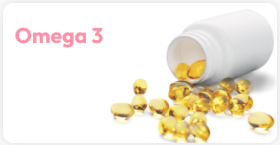
Recipes to boost omega-3 : easy, tasty, and repeatable
Here are quick recipes that integrate omega-3 sources seamlessly.
Flax & Banana Smoothie
1 tbsp ground flax, 1 banana, spinach, 1 tsp peanut butter, 1 cup oat milk.
▪️Why it works: High in ALA and antioxidants for improved absorption.
Walnut-Cilantro Pesto
Walnuts, cilantro, lemon juice, garlic, olive oil.
▪️Research shows walnut polyphenols protect omega-3 fats from oxidation, enhancing their bioavailability.
Chia Breakfast Bowl
3 tbsp chia soaked overnight in almond milk, topped with hemp hearts and berries.
▪️Why it works: Chia’s gel structure improves fat absorption and gut health.
Practical cooking tip: add ground seeds (flax, chia) to batters, smoothies, and yogurt, cooking reduces some sensitivity, but ground seeds are more bioavailable than whole ones.
Conclusion : Simple, Sustainable, Smart
Vegetarians can thrive on omega-3s without ever touching fish oil. The key is intention: a spoonful of flax here, a sprinkle of hemp there, and maybe an algal DHA capsule when life demands more support. Recent researches all point toward the same truth, plant-based omega-3 nutrition is not only possible but powerful when done right.
Omega-3s are more than a supplement; they’re a lifestyle choice that shapes brain clarity, hormonal balance, and long-term wellness. Build your plate with purpose, embrace whole foods, and let science-backed simplicity guide your vegetarian journey.
Frequently Asked Questions (FAQs)
1. Can vegetarians really get enough omega-3 without fish?
Yes, absolutely. While fish provides EPA and DHA directly, vegetarians can meet their omega-3 needs through ALA-rich foods like flaxseeds, chia, hemp, and walnuts. Research from Frontiers in Nutrition (2025) found that consistent ALA intake combined with lower omega-6 oils can significantly increase blood EPA levels. For optimal DHA, adding a plant-based algal oil supplement is an effective and sustainable option.
2. What’s the difference between ALA, EPA, and DHA, and why does it matter?
ALA (found in plants) is the starting form of omega-3 that the body can convert into EPA and DHA, though the conversion rate is limited. EPA supports heart health and inflammation control, while DHA is crucial for the brain, eyes, and nerves. According to a 2024 review in Nutrients, women of reproductive age convert ALA more efficiently than men, but DHA supplementation still offers additional cognitive and cardiovascular benefits.
3. Does cooking affect omega-3 content in seeds and oils?
Yes. ALA is heat-sensitive, meaning prolonged cooking or frying destroys its structure. Flax and hemp oils should never be heated; use them in salad dressings or smoothies. A 2024 study in Food Chemistry Interactions showed that heating ALA above 150°C reduces its bioactivity by nearly 60%. Ground flax or chia can safely be added to cooked dishes, as their omega-3 remains stable at moderate temperatures.
4. Is omega-3 important for skin and hair health?
Definitely. Omega-3s improve skin barrier function, reduce inflammation, and promote scalp hydration. DHA supports skin elasticity and helps regulate oil production. A 2025 dermatological review in Nutrients reported that vegetarian participants with higher omega-3 intake showed enhanced skin hydration and reduced acne severity compared to low-omega groups. Combined with antioxidants, omega-3s act as a natural “internal moisturizer.”
5. How does fiber or gut health influence omega-3 benefits?
Emerging science links gut health and omega-3 metabolism. Fiber-rich diets improve fat absorption and support beneficial bacteria that enhance omega-3 utilization. Research published in Nature (2024) found that inulin supplementation increased fat oxidation and suppressed hepatic lipogenesis via gut–microbiome pathways. This synergy shows that pairing omega-3s with prebiotics like garlic, onions, or oats enhances their therapeutic power.
References :
1. Baker EJ, Calder PC, Kermack AJ, Brown JE, Mustapha M, Kitson-Reynolds E and Garvey JJ (2024) Omega-3 LC-PUFA consumption is now recommended for women of childbearing age and during pregnancy to protect against preterm and early preterm birth: implementing this recommendation in a sustainable manner. Front. Nutr. 11:1502866. doi: 10.3389/fnut.2024.1502866
2. Michalina Banaszak, Małgorzata Dobrzyńska, Anna Kawka, Ilona Górna, Dagmara Woźniak, Juliusz Przysławski, Sławomira Drzymała-Czyż, Role of Omega-3 fatty acids eicosapentaenoic (EPA) and docosahexaenoic (DHA) as modulatory and anti-inflammatory agents in noncommunicable diet-related diseases – Reports from the last 10 years, Clinical Nutrition ESPEN, Volume 63, 2024, Pages 240-258, ISSN 2405-4577, https://doi.org/10.1016/j.clnesp.2024.06.053
3. Jarai, D., & Koller, A. (2024). Walnut Consumption May Contribute to Healthy Cardiovascular/Endothelial Function by Maintaining Membrane Integrity. Life (Basel, Switzerland), 14(11), 1426. https://doi.org/10.3390/life14111426
4. Zare, T., Fournier-Level, A., Ebert, B., & Roessner, U. (2024). Chia (Salvia hispanica L.), a functional ‘superfood’: new insights into its botanical, genetic and nutraceutical characteristics. Annals of botany, 134(5), 725–746. https://doi.org/10.1093/aob/mcae123
5. Craddock, Joel & Probst, Yasmine & Neale, Elizabeth & Peoples, Gregory. (2017). Algal supplementation of vegetarian eating patterns improves plasma and serum docosahexaenoic acid concentrations and omega-3 indices: A systematic literature review. Journal of Human Nutrition and Dietetics. 30. 10.1111/jhn.12474.
6. Office of Dietary Supplements – Omega-3 fatty acids. (n.d.). https://ods.od.nih.gov/factsheets/Omega3FattyAcids-HealthProfessional/
7. Álvaro A Vergara Nieto, Andrés Halabi Díaz, Millaray Hernández Millán, Daniel Sagredo, Molecular Features, Effective Sources, and Physiological Effects of Omega-3 Unsaturated Fatty Acids on Cardiovascular, Neurological, and Muscular Health, and Clinical Relevance for Several Conditions: A Narrative Review, Nutrition Reviews, 2025;, nuaf201, https://doi.org/10.1093/nutrit/nuaf201